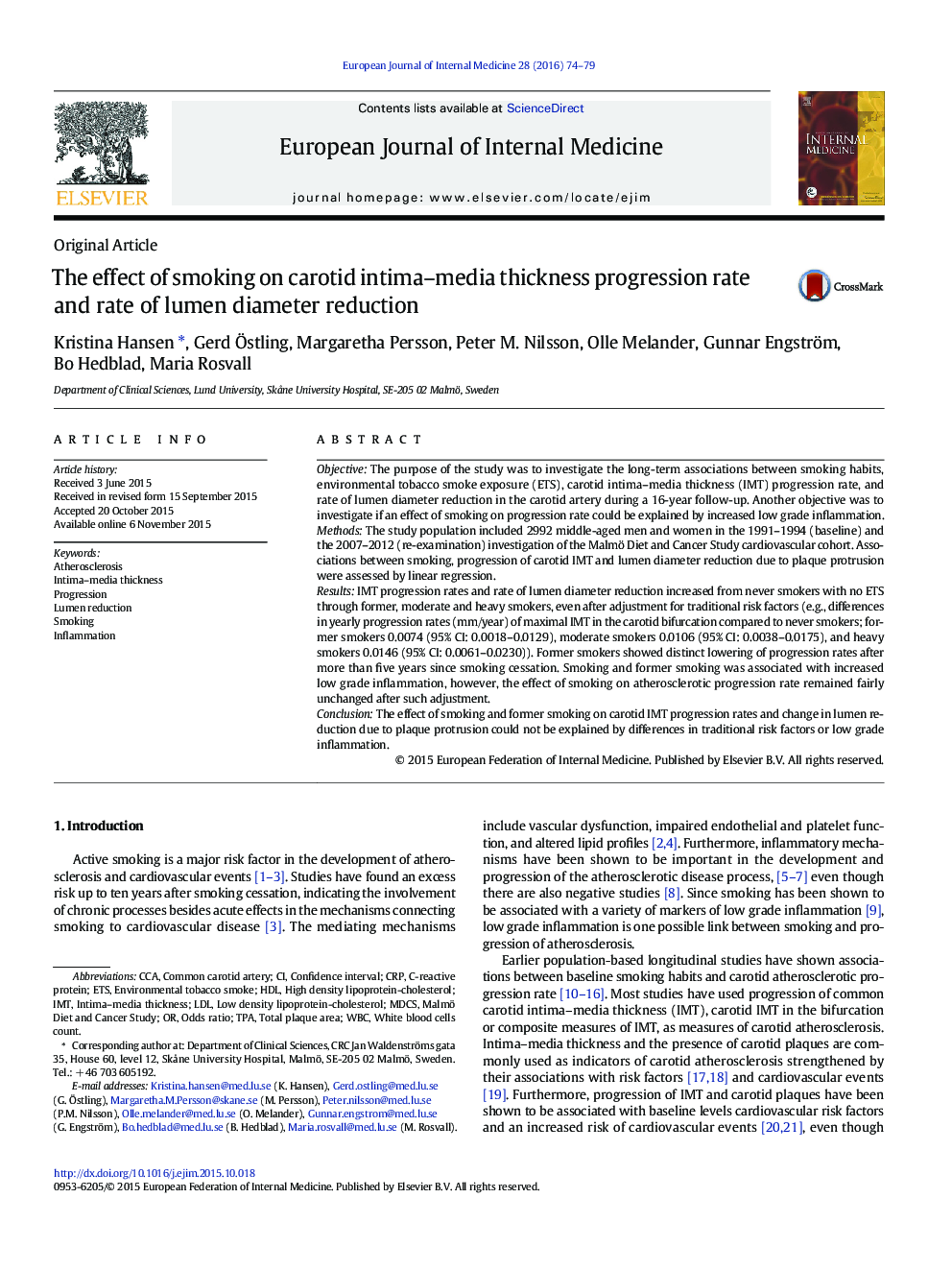| کد مقاله | کد نشریه | سال انتشار | مقاله انگلیسی | نسخه تمام متن |
|---|---|---|---|---|
| 3466072 | 1596538 | 2016 | 6 صفحه PDF | دانلود رایگان |
• Carotid IMT progression rates increased with smoking intensity.
• Rate of lumen diameter reduction increased with smoking intensity.
• Low grade inflammation could not explain effects of smoking on progression rates.
• Smoking cessation indicated favorable effects on progression rates.
ObjectiveThe purpose of the study was to investigate the long-term associations between smoking habits, environmental tobacco smoke exposure (ETS), carotid intima–media thickness (IMT) progression rate, and rate of lumen diameter reduction in the carotid artery during a 16-year follow-up. Another objective was to investigate if an effect of smoking on progression rate could be explained by increased low grade inflammation.MethodsThe study population included 2992 middle-aged men and women in the 1991–1994 (baseline) and the 2007–2012 (re-examination) investigation of the Malmö Diet and Cancer Study cardiovascular cohort. Associations between smoking, progression of carotid IMT and lumen diameter reduction due to plaque protrusion were assessed by linear regression.ResultsIMT progression rates and rate of lumen diameter reduction increased from never smokers with no ETS through former, moderate and heavy smokers, even after adjustment for traditional risk factors (e.g., differences in yearly progression rates (mm/year) of maximal IMT in the carotid bifurcation compared to never smokers; former smokers 0.0074 (95% CI: 0.0018–0.0129), moderate smokers 0.0106 (95% CI: 0.0038–0.0175), and heavy smokers 0.0146 (95% CI: 0.0061–0.0230)). Former smokers showed distinct lowering of progression rates after more than five years since smoking cessation. Smoking and former smoking was associated with increased low grade inflammation, however, the effect of smoking on atherosclerotic progression rate remained fairly unchanged after such adjustment.ConclusionThe effect of smoking and former smoking on carotid IMT progression rates and change in lumen reduction due to plaque protrusion could not be explained by differences in traditional risk factors or low grade inflammation.
Journal: European Journal of Internal Medicine - Volume 28, March 2016, Pages 74–79
